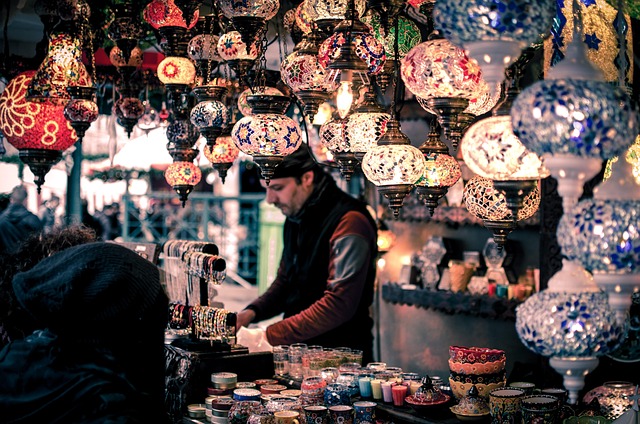Professional translation services for UK art catalogs and exhibition brochures are crucial for reaching a global audience. Skilled translators navigate cultural nuances and artistic terminology to accurately represent curatorial visions. Key steps include immersing in curatorial context, direct curator involvement, hiring art-field translators, maintaining consistency, and showcasing cultural sensitivity. These strategies ensure accurate, resonant translations that preserve UK artistic heritage while fostering international appreciation for art. UK Art Catalogs and Exhibition Brochures Translation Services enable art institutions to expand their global reach.
In the global art scene, effective communication is key to reaching diverse audiences. This article explores the critical role of translation in enhancing accessibility to UK art catalogs and exhibition brochures. From understanding curatorial language to overcoming challenges in artistic concept translation, we delve into best practices and expert tips for providing accurate museum translation services. Discover how localization fosters deeper art appreciation worldwide, particularly within the vibrant UK art market.
- Understanding the Art of Translation for UK Catalogs
- Capturing Curatorial Vision: A Step-by-Step Guide
- Exhibition Brochures: Bridging Language and Culture
- Expert Tips for Accurate Museum Translation Services
- The Role of Localization in Art Appreciation
- Overcoming Challenges in Translating Artistic Concepts
- UK Art Market: Enhancing Global Reach through Translation
Understanding the Art of Translation for UK Catalogs

In the realm of UK art catalogs and exhibition brochures, translation services play a pivotal role in reaching a diverse global audience. These publications, often the first point of contact for art enthusiasts, require precise language handling to ensure the curator’s vision is accurately conveyed. The art of translation involves not just word-to-word substitution but also understanding the cultural nuances and aesthetic terminology specific to the field.
Professional translators specializing in this domain bring a unique skill set, including an appreciation for art history and contemporary practices. They navigate complex terminologies related to mediums, techniques, and artistic movements, ensuring that the catalog or brochure reflects the exhibition’s essence. By employing UK Art Catalogs and Exhibition Brochures Translation Services, cultural institutions can maintain the integrity of their content while expanding their reach, fostering a global appreciation for art as intended by the curators.
Capturing Curatorial Vision: A Step-by-Step Guide

Capturing a curator’s vision involves more than just translating words; it’s about preserving the essence of their artistic narrative across languages, especially for UK art catalogs and exhibition brochures. Here’s a practical guide to ensure accuracy:
1. Understand the Curatorial Context: Before translation begins, immerse yourself in the exhibition’s or catalog’s context. Research the artist, their style, and the curator’s unique perspective. This step is crucial when conveying subtle nuances and conceptual depth in another language.
2. Direct Communication with the Curator: Engage directly with the curator to clarify any specific terms, references, or ideas they want to emphasize. Their insights can shape the translation, ensuring it aligns with their artistic intent. This collaboration guarantees a more authentic representation of the curatorial voice.
3. Hire Language Professionals: When it comes to UK art catalogs and exhibition brochures, consider hiring translators who have experience in the art field. Specialized translation services understand art-related terminology and cultural references, ensuring the translated text resonates with the target audience.
4. Maintain Consistency: Consistency is key when translating across languages. Use the same terms for artistic concepts and ensure visual elements are accurately described to maintain the curator’s original intent.
5. Cultural Sensitivity: Art transcends borders, but cultural nuances matter. A professional translator will understand how to convey cultural references appropriately, ensuring your catalog or brochure resonates with a global audience while staying true to its UK artistic heritage.
Exhibition Brochures: Bridging Language and Culture

Exhibition brochures play a vital role in connecting artists, their works, and audiences from diverse linguistic backgrounds. When it comes to UK art catalogs and exhibition brochures translation services, capturing the curator’s voice accurately is essential. This involves not just translating text but also understanding and conveying the nuanced context, tone, and intent behind each word.
Professional translators who specialize in art and cultural contexts are key to achieving this. They ensure that the brochure doesn’t just describe the exhibit but also resonates with readers from different cultures, preserving the curator’s original vision and message. This attention to detail is crucial for creating a seamless experience for international visitors, fostering a deeper appreciation of the artwork and the artistic narrative presented.
Expert Tips for Accurate Museum Translation Services

When it comes to translating UK art catalogs and exhibition brochures, accuracy is paramount. Museums and cultural institutions must ensure that the essence of their offerings is conveyed seamlessly in every language. This involves more than just word-for-word translations; it requires a deep understanding of the artistic context, historical nuances, and target audience.
Expert translators should possess not only proficiency in both source and target languages but also a keen eye for detail and an appreciation for art history. They must be adept at translating complex terms related to art techniques, periods, and styles accurately. Additionally, cultural sensitivity is crucial; expressions and idioms that might seem straightforward can carry different connotations across languages, potentially misrepresenting the original intent. Reputable translation services should employ native speakers who are also art enthusiasts or professionals, ensuring both linguistic expertise and a nuanced grasp of the subject matter.
The Role of Localization in Art Appreciation

In today’s globalized world, art appreciation transcends geographical boundaries, making the role of localization in the translation process more critical than ever. For UK-based art institutions, such as museums and galleries, providing content in multiple languages through services like UK Art Catalogs and Exhibition Brochures Translation is essential to reaching a diverse audience. This ensures that visitors from all corners of the globe can fully immerse themselves in the artistic experience, accessing information about exhibits and artworks in their native language.
Localization goes beyond simple translation; it involves adapting content to suit cultural nuances, ensuring the curator’s voice and intended message are accurately conveyed. Skilled translators who specialize in art and cultural localization play a pivotal role in preserving the essence of an exhibition while making it accessible to international audiences. This process is vital for fostering a deeper understanding and appreciation of art, creating an inclusive environment where every visitor can connect with the artistic narrative on their terms.
Overcoming Challenges in Translating Artistic Concepts

Artistic concepts, by their very nature, often defy straightforward translation. When it comes to UK art catalogs and exhibition brochures, translators must navigate a complex landscape where words alone may fail to capture the essence of a work of art. The challenge lies in conveying not just the literal meaning, but also the intended mood, symbolism, and cultural nuances that breathe life into each piece.
Professional translation services for these materials require a deep understanding of artistic terminology and an appreciation for different artistic traditions. Translators must become storytellers, weaving words that resonate with the target audience while staying faithful to the original vision. This delicate balance ensures that the curator’s voice, and by extension, the artist’s intent, is heard loud and clear in every language.
UK Art Market: Enhancing Global Reach through Translation

The UK art market, renowned for its rich history and diverse artistic offerings, has been steadily expanding its global reach in recent years. To cater to an international audience, art institutions and galleries are increasingly utilizing translation services to make their UK art catalogs and exhibition brochures accessible to a broader, worldwide market.
By translating these essential marketing materials, the UK art sector can effectively communicate its unique artistic heritage and attract collectors, enthusiasts, and tourists from around the globe. Professional translation services play a pivotal role in preserving the curator’s voice and ensuring that the nuances and context of each artwork are conveyed accurately in different languages. This strategic move not only enhances the market’s visibility but also fosters cultural exchange and appreciation for UK art on an international scale.
Translation plays a pivotal role in making UK art accessible globally, ensuring that curatorial voices resonate across borders. By implementing expert strategies for catalog and brochure translation, the art world can bridge language gaps, foster cultural understanding, and enrich global art appreciation. This article has explored various aspects of this process, from capturing curatorial intent to overcoming challenges in artistic concept translation. Embracing these insights, UK art institutions can expand their reach, making their exhibitions and collections truly international phenomena through effective localization services for catalogs and exhibition brochures.



